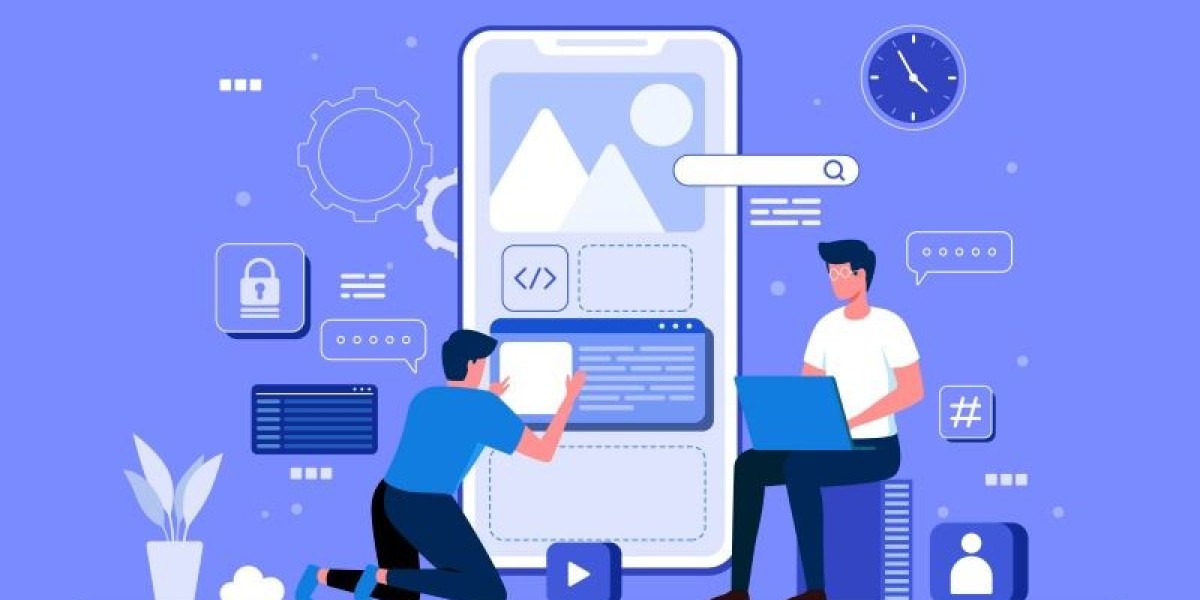If you’re saying, “I want to create an app, where do I start?” then you’re already on the right path to entering one of the most dynamic and rewarding industries today. Building an app can be a fantastic way to bring an idea to life, start a new business, or provide value to users worldwide. However, the path from an idea to a finished product can seem daunting, especially with so many technical, strategic, and logistical factors to consider. This guide will walk you through the entire process, helping you understand each phase and providing actionable steps to transform your idea into a real, functional app.
Understanding the Basics: What You Need to Know Before Building an App
Before diving into development, it’s essential to have a firm grasp on some key concepts that will impact your journey from start to finish. Whether your goal is a simple tool or a complex platform, knowing the app development fundamentals is crucial. Ask yourself:
- What is the primary goal of my app?
- Who is the target audience?
- What budget and resources can I dedicate to this project?
Step 1: Defining Your App Idea and Goals
Identify the Purpose of Your App: Think about what problem your app will solve and who will benefit from it. This clarity will guide the entire development process.
Research the Market: Look at similar apps in the app stores and see what users like and dislike about them. Find gaps in the market that your app can fill.
Define Success Metrics: Decide how you’ll measure the success of your app. This could be downloads, user engagement, or revenue, depending on your goals.
Step 2: Sketching and Planning the App
Creating an app is not just about coding; planning is a huge component. With a clear blueprint, you’ll make it easier for yourself or your developers to work efficiently.
Outline Key Features: List the essential features you want. For example, do you need user authentication, a messaging system, or payment integration?
Create a Wireframe: A wireframe is a simple layout of your app’s screens, helping you visualize how users will navigate through it. You can create this on paper, or use tools like Figma or Sketch.
Select Your Platform: Decide whether you want an iOS, Android, or cross-platform app. Each option has pros and cons regarding user reach, cost, and development time.
Step 3: Choosing the Right Development Method
If you’re saying, “I want to create an app where do I start,” your choice of development method is essential. There are generally three options: Native App Development, Cross-Platform Development, and Hybrid App Development.
Native App Development: Developing the app separately for each platform (iOS or Android). Native apps tend to perform well but require more resources.
Cross-Platform Development: With frameworks like React Native or Flutter, you can build a single codebase for both platforms. This option saves time and cost.
Hybrid App Development: Using web technologies like HTML, CSS, and JavaScript to create a web-based app within a mobile app shell. These apps are fast to create but may sacrifice performance.
Step 4: Budgeting Your Project
Budget is often a deciding factor in app development, as costs can vary based on complexity, platform, and other factors.
Estimate Development Costs: A simple app can cost anywhere from $10,000 to $50,000, while complex ones can go beyond $100,000. Remember to budget for both development and maintenance.
Factor in Ongoing Expenses: These may include hosting, regular updates, and marketing costs. Having a long-term financial plan ensures sustainability.
Consider Funding Options: If you need additional resources, explore options like bootstrapping, seeking investors, or crowdfunding platforms.
Step 5: Finding the Right Development Team
If you don’t have a technical background, finding a reliable development team is crucial to bring your vision to life.
Hire Freelancers or an Agency: For smaller projects, hiring a freelancer may be more affordable. For larger, ongoing projects, an app development agency might provide more structured support.
Evaluate Portfolio and Skills: Look for developers with experience in your target platform and field. Check their portfolio and seek reviews from previous clients.
Set Clear Expectations: Clearly communicate your goals, timeline, and budget. This will help prevent misunderstandings and ensure smooth project flow.
Step 6: Designing a User-Friendly Interface (UI/UX)
A crucial part of building a successful app is ensuring it’s user-friendly and visually appealing.
Focus on Simplicity: Users prefer apps that are easy to navigate. Avoid clutter and prioritize essential features on the main screens.
Create an Engaging User Experience (UX): Think about the user’s journey and make the process as seamless as possible. Consider features like easy onboarding, intuitive navigation, and quick-loading screens.
Iterate and Test the Design: Gather feedback on early designs from potential users and refine the layout accordingly.
Step 7: Developing and Testing Your App
Once the design is complete, it’s time to start development. This step involves transforming your ideas and designs into a functional app.
Build an MVP (Minimum Viable Product): Create a simplified version of your app with core features to test its concept and market potential. This helps in gathering user feedback early.
Conduct Rigorous Testing: Testing is essential to catch bugs and ensure a smooth user experience. Test across multiple devices, operating systems, and network conditions to identify issues.
Collect Feedback and Iterate: User feedback is invaluable. Track any issues that arise and continuously improve the app to enhance user satisfaction.
Step 8: Launching Your App
Launching an app involves more than just uploading it to the app store. A strong launch strategy will help attract initial users and create momentum.
Optimize for App Stores (ASO): Use relevant keywords, engaging visuals, and a clear description to help users find your app in the app store.
Develop a Marketing Plan: Promote your app through social media, content marketing, and partnerships. If budget permits, consider paid advertising to boost visibility.
Gather Reviews and Ratings: Positive reviews can significantly impact downloads. Encourage users to leave reviews and address any issues promptly.
Step 9: Post-Launch Support and Updates
The app development journey doesn’t end at launch. Maintenance and updates are necessary to keep users satisfied and improve app functionality.
Monitor Performance: Use analytics tools to monitor usage patterns, crashes, and user feedback to understand areas for improvement.
Regular Updates: Keep your app fresh and functional by releasing regular updates, incorporating new features, and fixing bugs.
Engage with Users: Build a community around your app through social media, email newsletters, and customer support. Engaging with your users helps build loyalty.
Step 10: Scaling and Growing Your App
After establishing a user base, look for ways to scale and grow your app further.
Add New Features: Based on user feedback, introduce new functionalities to keep users engaged and attract new ones.
Explore Monetization Options: If your app is free, consider adding monetization options such as ads, in-app purchases, or a subscription model to generate revenue.
Adapt to Market Changes: The tech world evolves rapidly. Stay informed about trends in your niche and adapt your app to meet emerging needs.
Conclusion
If you’ve been wondering, “I want to create an app, where do I start?” this guide gives you a clear path from concept to launch and beyond. By following these structured steps, planning carefully, and working with the right team, you can build an app that stands out in a competitive marketplace. Remember that the app development journey requires patience, adaptability, and a focus on user needs, but with these steps, you’re set to succeed.
For more interesting blogs click here.
Naijamatta is a social networking site,
download Naijamatta from Google play store or visit www.naijamatta.com to register. You can post, comment, do voice and video call, join and open group, go live etc. Join Naijamatta family, the Green app.
Click To Download


